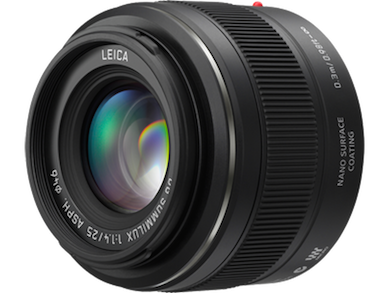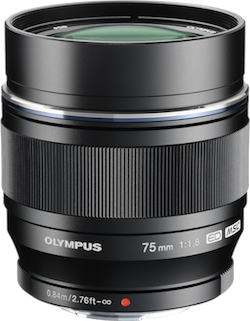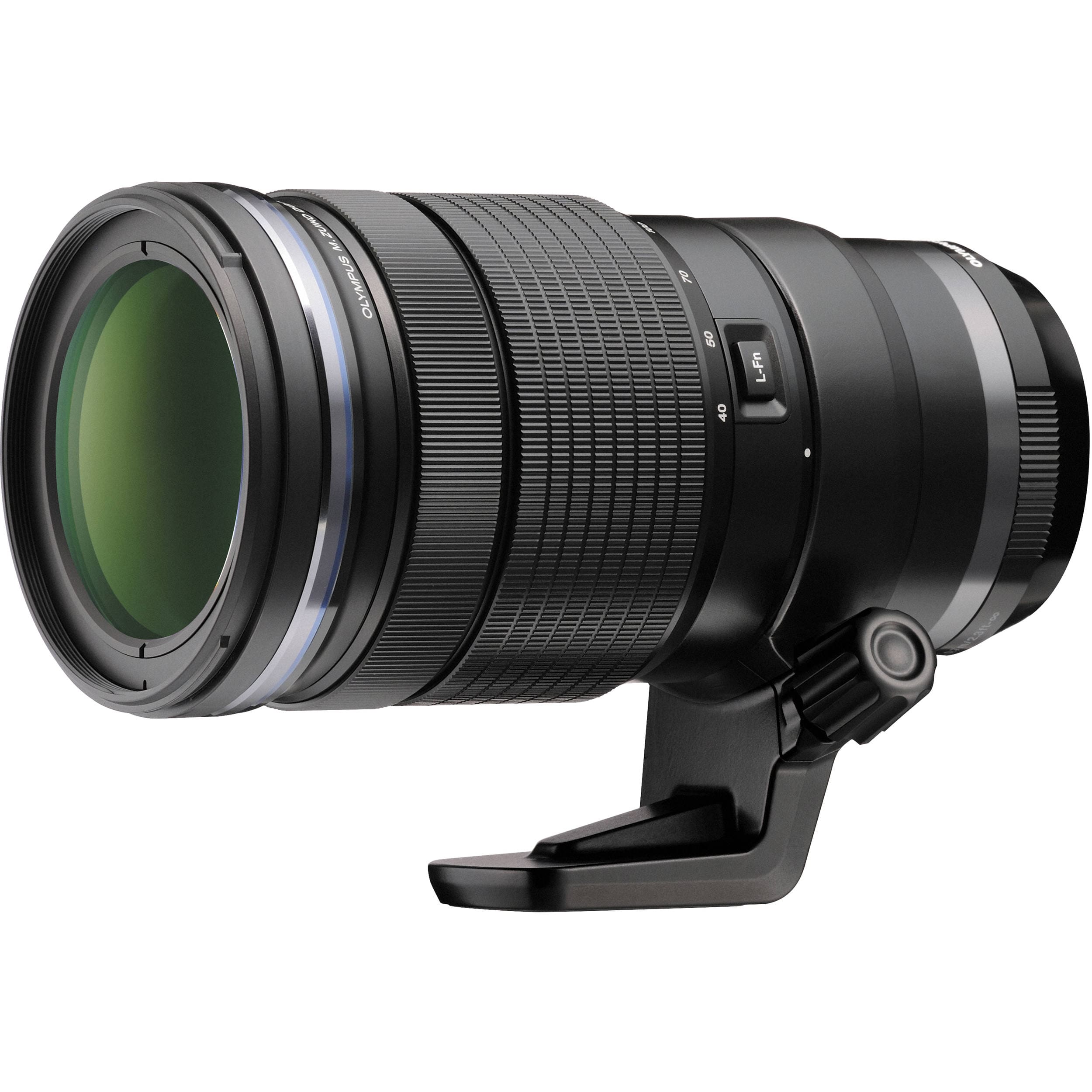You don’t get a whole lot when you google “Best Micro 4/3 lenses”. First is a link to the first lenses you should buy, followed by an ode to the Voigtlander Holy Trinity and a couple thorough guides to get you on your way.
But, before you get too far!
Editor's Note: This post was originally published on July 24, 2015. You can find the updated list as of January 15, 2018 right here.
There’s probably a reason for the small selection of “best” articles. One, it takes a firm set of guts to outright proclaim the best of anything.1 And two, the best is different for literally every person.
The best could be the highest value. Or the least expensive. Or the toughest build.
Regardless of all that, one of my favourite writers once said we are supposed to write the internet we want to read. And there isn’t a single Micro 4/3 “Best Lens” guide I agree with.
This list isn’t meant for brand new photographers or for someone looking to save a few bucks when accumulating Micro 4/3 lenses. It also hasn’t been written with any type of photographer in mind. It’s a fairly opinionated article, and it’s too expensive for me to afford.
Whenever I read reviews or watch videos of Micro 4/3 lenses — specifically reviews of the Panasonic Leica Nocticron 42.5mm f/1.2 or the Olympus 40-150mm f/2.8 PRO — the author uses the following phrase:
This lens is a masterpiece, but it comes at a high cost, especially for Micro 4/3 shooters.
This line drives me up the wall. It paints a poor brush on people who choose a specific system because it fits their needs. Their needs may be that the system, as a whole, is less expensive than a full frame system. But their needs may also be in the form of portability, or speed, or lightness, or even a specific look. I don’t particularly like reviews which paint a product black because of its price — usually the price is indicative of the product’s quality and usefulness. Usually.
So with that in mind, this list outlines the range of lenses I would buy if I had all the money in the world. Let’s begin.
Olympus M. Zuiko ED 7-14mm f/2.8 PRO

The wide end of this list is taken care of by Olympus’ latest PRO zoom lens. The 7-14mm f/2.8 PRO covers the 14mm to 28mm focal range and delivers sharp photos right from f/2.8. The lens is also weather sealed — ideal for the outdoors where this lens was meant to be used.
I’ve used both the 12-40mm f/2.8 PRO and the 40-150mm f/2.8 PRO, and I’m sure the 7-14mm f/2.8 PRO complements the line perfectly. The lenses are known for their high end build quality and manual focus clutch mechanisms, as well as impeccably sharp images. They all autofocus extremely quickly, quietly, and accurately. In all honesty, there is very little to not like about these lenses.
Except for their speed. And the 7-14mm’s f/2.8 aperture is no different.
There are a few other, faster options in the wider focal ranges, namely the Olympus 12mm f/2.0 and the Voigtlander Nokton 10.5mm f/0.95. The Olympus 12mm f/2.0 is small and extremely well built, while the Voigtlander 10.5mm f/0.95 offers an insatiable speed and build quality.
But at the wide end, I feel the optical benefits of a fast f/0.95 or f/2.0 lens are lost. Since wide angle lenses are used outdoors, you usually have plenty of light to work with. Secondly, prime lenses, although vastly better in terms of image quality, limit your hand on the wide end. If you physically can not back up to compose more of the frame in your shot, you’re out of luck. With the Olympus 7-14mm f/2.8 PRO’s versatility, you’ll be hard pressed to find a situation where you can’t get everything you want in the frame.
The Olympus 7-14mm f/2.8 PRO is an expensive lens. The lens will run you $1299 USD, but it will reign supreme on the wide end of this list for quite a while.
Voigtlander Nokton 17.5mm f/0.95

Voigtlander’s Nokton line of lenses is exceptional and the 17.5mm f/0.95 may be the best of the line. All Nokton lenses are built like a tank, with high quality materials and precise glass. The Nokton lenses are all manual focus only and have no electrical contacts to communicate with the camera. As such, EXIF data is cast aside for the sake of beautiful, buttery mechanical manual focus.
Of course, the most impressive part of all Nokton lenses are their lightning fast f/0.95 apertures. These lenses suck in light in the dimmest of situations and allow your shutter speeds to stay high enough for sharp imagery. The f/0.95 aperture is also known for its ethereal qualities — images are not tack sharp when shot wide open, but the dreamy look helps give the 17.5mm f/0.95’s photograph a classy characteristic.
Olympus offers a 17mm lens to hone in on the precious 35mm focal length, but it’s hard to beat the Voigtlander’s f/0.95 aperture. The Olympus 17mm is much smaller than the Voigtlander option and it’s also much cheaper. Further, it has autofocus, which may be necessary at the 35mm focal length on the streets or indoors.
Regardless though, Voigtlander lenses offer some of the best image quality found on the Micro 4/3 system and the 17.5mm f/0.95 is the best of the Nokton line. I’d be remiss not to include it in this list.
Like the 7-14mm, the Voigtlander is expensive and will run you $900 USD. But hey, I said money was no object today.
Panasonic Leica DG Summilux 25mm f/1.4

The Panasonic Leica Summilux 25mm f/1.4 was the first true lens for the Micro 4/3 system. The lens is getting on in age right now and some of its feature-set is starting to get long in the tooth. But the characteristics of the creamy bokeh and the warm saturation in the Pana Leica 25mm’s photos is something to salivate over.
The Pana Leica 25mm is small, light, and very portable. The lens is made of plastic, focuses acceptably quick, and is sharpest around f/2.8 and up. The fast f/1.4 aperture allows for high shutter speeds even in low light and, if you need to flip into manual focus mode, the focus ring spins smoothly. The 50mm full frame equivalent lens is an essential focal length for any photographer’s bag and I believe this lens is a fantastic first lens purchase for any new Micro 4/3 shooter.
Olympus and Voigtlander both offer their own 25mm iterations, but none of them match the character of the Pana Leica’s images. Olympus’ 25mm offering isn’t as fast as Panasonic’s, but it is a few hundred dollars cheaper. The Voigtlander Nokton 25mm f/0.95 is both faster and better built than the Pana Leica 25mm, but it’s also considerably more expensive and, more importantly, it’s considerably bigger. The Pana Leica’s small size makes it an ideal everyday lens, fit for just about any situation.
Although the Pana Leica 25mm is getting old, it’s still the best of the best. At $600 USD, it’s a bit expensive considering its old feature set. However, it’s very easy to find this lens on eBay in great condition for a few hundred dollars cheaper. I bought mine for around $350.
Panasonic Leica DG Nocticron 42.5mm f/1.2

The Nocticron is legendary in the Micro 4/3 world and is one of the few lenses capable of luring photographers into the Micro 4/3 system on its own. This lens is known world wide not only as the best Micro 4/3 lens, but as one of the best lenses ever produced in the industry. After looking at the perfect bokeh, or the lens’ sharpness at a wide open f/1.2, it’s easy to see why the Nocticron is a heralded lens.
The Panasonic Leica Nocticron f/1.2 is modelled after the even more impressive Leica Noctilux and, as such, features a top notch build quality, large front element, and super fast aperture. The lens is a bit bigger and heavier than the generic Micro 4/3 lens because of the included Optical Image Stabilization, but the image quality and colour rendering more than make up for the size. The lens renders colours in a warmer, softer fashion than any other lens in the Micro 4/3 system and its bokeh is out of this world.
Many argue the Nocticron’s image quality isn’t worth the hefty price tag premium. The Nocticron runs a cool $1600 USD brand new and can occasionally be found on eBay in the $1100 to $1200 USD range. Brand new, it’s the most expensive Micro 4/3 lens you can buy. And when you consider some photographs shot with the Olympus 45mm f/1.8 lens, or the Voigtlander Nokton 42.5mm lens, or even the less expensive Panasonic Lumix 42.5mm, it’s hard to imagine the Nocticron is truly worth such a price tag. $1600 USD is right up there with full frame lens pricing, so justification for the Nocticron is fundamental.
But like I said earlier, I’d argue many people choose to shoot Micro 4/3 not because of the cost, but because of the size, portability, and other features of the system as a whole. With that in mind, $1600 for the best image quality the system offers isn’t as bad a deal as it’s made out to be. A few friends have tried to convince me to stay away from the Nocticron’s expensive price tag, but a price can not be put on the way a lens renders colours.
Olympus M. Zuiko ED 75mm f/1.8

The last lens on this list is the venerable Olympus 75mm f/1.8. As a portrait lens, the 150mm full frame equivalent focal length is a long one, but this lens renders some of the most beautiful, most sharp images found on the system.
The 75mm is built of metal and glass and is heavy in the hand. Despite its heft, the lens isn’t overly large and fits on any OM-D camera comfortably. Colours are a bit sterile and neutral, but that’s more an Olympus trait than it is a 75mm trait. The lens, unfortunately, is not weather sealed. Considering the focal length (and the cost) of this lens, I’m surprised it’s not weather sealed. It’s not a comfortable lens to use indoors because of the 150mm focal length, so it begs to be taken outside and shot in Mother Nature.
There aren’t many competitors for the Olympus 75mm, and that’s probably for good reason. The 75mm offers some jaw dropping bokeh and tack sharp images wide open. With it’s relatively small size, I find it hard to believe Panasonic or Voigtlander could come up with a more capable lens.
The lack of weather sealing is why I decided to sell this lens. I remember thinking the professional level Olympus 40-150mm f/2.8 PRO lens would fill the long portraiture range nicely. And although that certainly is the case, there is no matching the 75mm’s size, speed, sharpness, and autofocus speed.
The Olympus 75mm f/1.8 runs a $799 USD price tag and is one of the less expensive lenses on this list. Without a doubt, that price tag is worth every dollar. I’ll go so far as to say I’m considering repurchasing this lens for those rare moments I need an extra long portrait lens.
Notable Lenses Not On This List
There are a few notable lenses left off this list which may raise some eyebrows. I currently own one of the lenses not on this list, and I look on it each day with ambivalence.
Both the Olympus 12-40mm f/2.8 PRO and the Olympus 40-150mm f/2.8 PRO have been left off this list. Six to eight months ago, I was utterly convinced these two lenses were the two-lens-answer to 90% of the focal lengths I could ever need. While I wasn’t wrong, there are a few major compromises when going the two zoom route.
With the 12-40mm f/2.8 PRO, Olympus created a small, weather proofed, sharp lens to cover all natural focal lengths. This one lens could theoretically replace three of the five lenses on this list. However, at f/2.8, the Olympus lens just isn’t fast enough. And further, Olympus’ sterile, neutral colour rendering isn’t as pleasing (in my opinion) as the rendering of the Panasonic Leica options.
The 40-150mm f/2.8 PRO is a little easier to justify. The lens is large. Very large. Almost too large. The premise of the Micro 4/3 system is to be small and portable, and although the 40-150mm f/2.8 PRO is substantially smaller and lighter than other lenses in this focal range for other systems, it’s just too large to be considered portable. I travelled recently with just the 12-40mm and the 40-150mm, and I constantly found myself swearing under my breath because of the 40-150mm’s size.
Further, I don’t believe any long telephoto lens can crack this top five. The 80-300mm full frame equivalent focal length is very long and is ideal for sports photography or professional portraiture. The ergonomics and two handed nature of the lens also make the 40-150mm awkward to use under normal circumstances. I truly believe the 40-150mm is the best wedding lens you can buy in the Micro 4/3 system. However, very few photographers buy camera gear to shoot weddings. In my opinion, the lens just doesn’t fit here.
The remaining Voigtlander Nokton lenses have also been left off this list, and this is solely because I believe autofocus is essential. Some incredibly talented photographers shoot manual focus only systems and can nail focus every time. I, however, have practiced and can not claim good manual focus statistics. I actually prefer manual focus, as the precision and accuracy far outweighs the unpredictability of a lens’ autofocus system. However, not having autofocus is a deal breaker.
Lastly, I’ve left off the Panasonic Leica DG Summilux 15mm f/1.7. I recently purchased this lens and await its arrival. I believe the Panasonic Leica trinity of the 15mm, 25mm, and 42.5mm are the best prime lens combination you can buy for the Micro 4/3 system. They all have super fast apertures2, a relatively small size, a very Leica-y look, and two-thirds of the combination is fairly affordable. I’d really like to see weather sealing for the three lenses, but I’ll let that slide in order to have that fantastic colour rendering.
So why leave off the 15mm? Because the 15mm is an odd focal length to begin with, and because it would feel quite redundant with the 7-14mm sniffing up its sleeve. At $600 USD, the 15mm isn’t inexpensive either, so justifying the place of this lens on this kind of list is difficult.
Final Thoughts
I found myself a bit nervous about publishing this article, mostly because I hate going back on my prior thoughts. In all likelihood, this list will change three or four times before I’m entirely satisfied with it. For now though, I feel very comfortable recommending the five lenses listed above.
It’s a bit hypocritical, perhaps, to admit I won’t be following my own advice. This list was created as a quick way to search Google and determine the best lenses to buy in the system, regardless of price. In reality, price does matter and will sway buyers significantly. I myself can’t afford the $5,100 USD price tag for all five lenses, so I’ll settle for the Panasonic Leica 15mm Summilux for my wide angle lens until the time comes to purchase the 7-14mm zoom.

Further yet, I have to admit my own past mistakes. I already owned the Olympus 75mm f/1.8 and sold it in favour of my current 40-150mm f/2.8 PRO. As I said, I know why I sold the 75mm in the first place, but I look on the 75mm lens which such lust these days. The size of the lens. The image quality. The sharpness. All of those things are slapping me in the face as I type this.
Hopefully this list gives some clairvoyance for those people looking to commit to the Micro 4/3 system full time. Panasonic’s recent release of the GX8 with a 20MP sensor helps push the system as a whole further into the future and helps solidify the idea of purchasing the system as a long term investment. Each of these lenses is an investment unto itself, and I’d have it no other way.
In fact, I recently said I don’t have the guts to make such a proclamation in this Wednesday Edition. So much for that. ↩
Although someone will have to explain to me why the 15mm gets the “Summilux” title and only sports an f/1.7 aperture. Leica geeks probably snicker at the seemingly obvious error. ↩